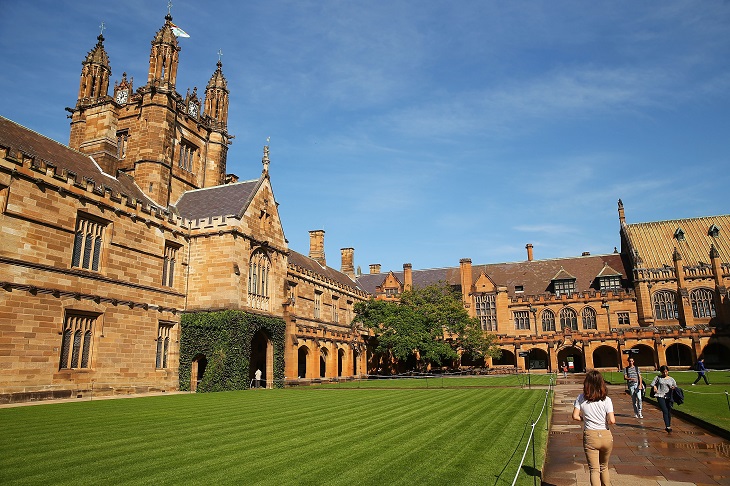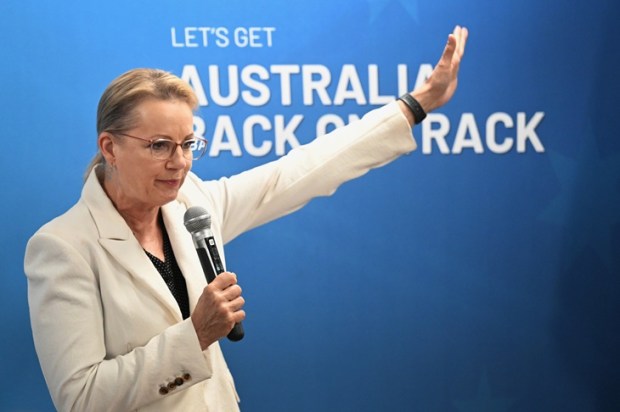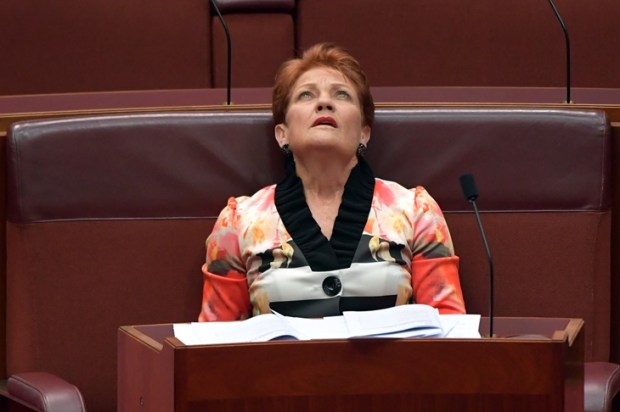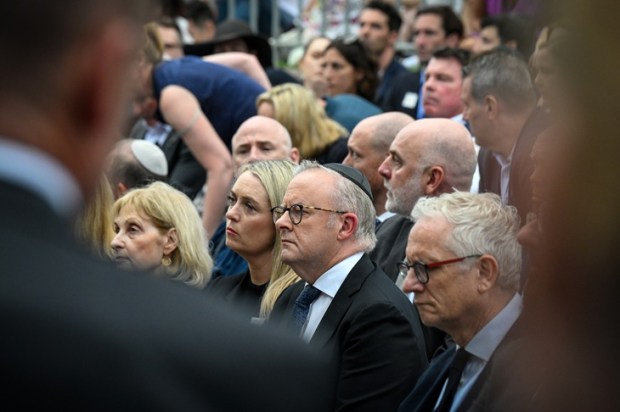Of the assorted areas of life that have deteriorated over the neoliberal era – energy costs, health, and trust in institutions – has there been a greater erosion in esteem than that of higher education? The state of the Australian academy evokes Oscar Wilde’s refrain that’s all that’s now known is ‘the price of everything and the value of nothing’.
This wasn’t always the case. Australia – given our history – has never been an apogee of the intellect. Our Anglo-European inheritance did once furnish us with an estimable academy, but we were one of the first places in the modern world to establish secular universities in the spirit of the Athenian model, and one of the first to offer tertiary education to women.
The establishment of an Australian academy was, as Governor-General Sir Charles Fitzroy remarked upon the founding of The University of Sydney in 1850, a development undertaken for the ‘advancement of…morality, and the promotion of useful knowledge’; an institute erected ‘for the promotion of literature and science’, with entrance not contingent on religion nor social-status, but on ‘the basis of academic merit’, as MP William Wentworth would confirm.
It was a noble intention that would come to fruition as our academy spawned a range of world-renowned figures. Inter alia, the Princeton philosopher Peter Singer and entertainer – and Dame Edna herself – Barry Humphries emerged out of The University of Melbourne. While at The University of Sydney, the Kid from Kogarah, Clive James, and acclaimed art critic Robert Hughes were fellow alumni back in the 1950s. Other notable names, like opera singer Dame Nellie Melba and Nobel-prize-winning author Patrick White, were an integral part of our academic and artistic milieu.
The Australian academy – including the CSIRO – was also the site of inventions of major historical importance. It’s no exaggeration to say that without Australian inventions – like Wi-Fi, the bionic ear, or the airplane ‘black box’ – many of the advances and comforts of modern life wouldn’t be with us.
Yet such developments are a far cry from our current academic state. Alongside a decline in public literacy and numeracy – even among teachers – and a deterioration in school performance, as evident in our PISA results, hardly a day goes by without a major malfeasance at one of our tertiary institutions.
As a recent article in The Australian starkly observed, the Australian ‘education experience is just a sham’ with plagiarism and cheating rife. Alongside sector-wide contract cheating, there are now common examples of students who’ve faked their way through their entire degree.
There is a favoured method involving students bypassing university plagiarism software by employing ghostwriters in poor yet English-proficient places like East Africa. As one ghostwriter remarked: ‘I have some students who I have worked for since their first year and I’ve done all the assignments until they graduate.’ Adding that what really worried him was the ‘the medical students who have never done even one assignment since their first day’.
Like our ‘Most Liveable Cities’ crown, our position in the recently-published Times University Rankings is a partial reflection of our institutes and not a more acute gauge of the whole. Indeed, 60 per cent of these rankings are based on the narrow notions of research and citation, while only 30 per cent is given over to the more fundamental practice of teaching.
On top of this are increases in class sizes and a decline in academic standards, with the latter evident in the fall in the use of final exams and the consequent increase in group assignments. That is, assessments designed to help weaker, overwhelmingly foreign, students slide through on the coattails of their more competent classmates.
Universities are now engaged in a sleight-of-hand in which the content remains the same, yet the onus is taken off the individual. For as commentator – and ex-student – Meshel Laurie noted of her university experience: ‘It’s a neat trick: group assessment (with groups allocated by instructors) in courses overloaded with full-fee-paying, non-English speaking students means the English speakers bear the burden of catching the others up, translating the course content for them, and helping them pass.’
Thus – like our cities’ ostensible liveability – our university results are useful fodder for the marketers; but in reality, our universities are the educational equivalents of fast-food outlets whereby an outwardly attractive appearance belies the utter lack of sustenance found within.
Given such sophistry, what has caused this fall from grace? And why it allowed to persist? The sad fact is that in opposition to the crucial role that is still performed by parts of our universities in training our doctors, lawyers, and engineers – vast swathes of the sector are now nothing more than a warehousing program for young and a ‘degree factory’ run along economic lines for favoured interests.
Of these interests, the biggest beneficiary has been the foreign students themselves – particularly those from the developing world. Our top ten source countries are dominated by nations from what was once known as ‘third-world’ with the top three – China, India, and Nepal – comprising well over 50 per cent of our overall annual intake. It is a fact made more acute by the rapid increase in total numbers, with the amount of international students in Australia almost doubling between 2010-20.
Australia has by far the largest per capita presence of foreign students of any place in the world, at over a quarter of our tertiary cohort. Our universities have come to function not as a place of education, but as a means to a first-world wage and living conditions, and an indirect route to permanent residency: with a sizeable minority of ‘students’ (around 16 per cent) obtaining residency after their studies.
This trend is further reinforced by the vast numbers who don’t obtain residency, but who nevertheless stay on in one form or another: with ‘more international students than ever…remaining in Australia for up to four years on graduate work visas following their studies’. The figure is made worse by the non-negligible number who – both here and in the UK – simply overstay their visas and remain here illegally.
A cynical interpretation could be that these things don’t really matter, as long as such incidents remain isolated and the integrity of the academy remains. Yet unsurprisingly, the entrance of a raft of non-native students into a nation’s tertiary-education sector, often with little knowledge of its history, culture or customs – or even its language of instruction – has not proven salutary.
English language requirements are often forged and pre-university preparatory courses are little substitute for years of immersion in the ideas and idiom of instruction. Some students even regress in their English the longer they are here, rarely leaving their first language enclaves of their home and place of work.
There are observations that clearly haven’t led to any serious governmental response. As with the equally pejorative and all-pervasive influence of gambling, the commercialisation of education is a conscious policy. Australia, like the rest of the West, is a deindustrialised and service-led economy with few other options. The marketisation of education isn’t just accepted: it’s encouraged.
As in our post-industrial fantasy-lands, the universities are essential economically: generating around $37 billion annually and ranking as our third largest export. It is a trend that’s particularly pronounced in ex-manufacturing hubs like Victoria, where car factories are long shuttered and international education is the state’s biggest earner generating ‘$6.9 billion in revenue last year’ as per government figures.
Given such vast sums of money, cui bono? Well, high on the list are the university administrators, particularly the vice-chancellors. To say that the commercialisation of education has been lucrative is a rank understatement. As in distinction to Aristotle’s observation in his Metaphysics that ‘all men by nature desire to know’, the current catch-cry seems to be that all men desire to profit. As one paper noted: our ‘Vice-Chancellors (VC) are among the highest paid in the world, with an individual average yearly income in excess of $1 million, or about twice the annual income of the Prime Minister.’
Alongside the administrators, the property and construction sectors have been major beneficiaries – with the symbiosis between government, the universities, and the building sector exceedingly evident. For as anyone who has set foot on a campus can attest, the amount of construction that has taken place has been truly extraordinary. A 2019 Times article observed: The University of New Wales has seen ‘the biggest estate development’ in its 70 year history. While further south, The University of Melbourne has undergone massive recent changes, including work done with the state government in the construction of Melbourne’s new Metro Tunnel. With a similar scene seen across town at RMIT and Monash as well.
Not to be outdone, the Australian National University has undergone a A$260 million redevelopment [that] ‘features a concert venue, cinema, pool, gym, supermarket, bars, and a cultural centre’. Changes that aren’t enough, however, as the university plans to ‘restructure its entire campus over the next 20 years’. With the transformation of the university into a quasi-commercial entity also occurring abroad – including those historical homes of the Anglosphere academy: Cambridge and Oxford.
Tragically, these developments have taken place with total disregard for our architectural heritage. Universities, of all places, should be most acutely aware of this. In a laughable rebuke to the grandeur of these ancient institutions, almost all of the construction now seen on campus – like the Chau Chak Wing building – has been done in the horrible asymmetrical aesthetic of modernists like Gaudi and in contradistinction to the classical tradition. Permanent notions of symmetry and beauty appear to be unknown or ignored by our architects as they operate under the destructive aegis of post-modernism and economic rationalism.
Instead of our campuses being aesthetically pleasing places of study – sanctuaries for an impecunious life of the mind – they’ve become the brutalist site of a confected economic stimulus and a circuitous means to permanent residency.
With this dependence on diversity having the flow-on effect of further left-liberalising the academy, and thus strengthening the already egregious leftward shift seen across our politics and culture. Indeed, even tyrannically so, as Brianna McKee has brilliantly noted in these pages.
Yet with such a high proportion of our economy dependent on foreign students, there’s little wonder that left-liberalism is so all-pervasive and that any countervailing conservative notions are excluded from the discourse. Put simply, cosmopolitanism is lucrative, and conscious policy, so it will continue – no matter the failings and fraudulence that flourish under its auspices.
The capitulation of the universities to cosmopolitan commercial pressures was all but confirmed in the aftermath of the latest cheating scandal. In response to recommendations by the University of Sydney’s Salvatore Babones, a staunch critic of the Australian university model, to undergo ‘radical reform’ and to shift ‘back to in-person assessments and exams’ the usual mealy-mouthed response was proffered by the sector.
As after conceding that ‘cheating is on the rise and alarmingly so’, all the deputy vice-chancellor of The University of New South Wales, George Williams, could offer was a raft of platitudes and promises to do better. For as Babones notes: ‘The system encourages …cheating’ yet there’s ‘not a willingness to prevent it and change the culture’ – with the answer as to why so obvious it hardly requires elaboration.
The corruption of higher education has been further evident in the sector’s recent emphasis on ‘online-learning’ – an oxymoron if there ever was one. As in what was one of the more disheartening aspects of the Covid experience, the sector slyly invoked the notion of ‘never letting a crisis go to waste’ by using Covid as a pretext to further digitise education.
Even though we’re overwhelmingly vaccinated and months past the latest Covid peak, the universities still insist on large amounts of online learning. As per the World Economic Forum, online-learning has increased almost exponentially these last few years. A pejorative trend that’s nevertheless been embraced as the sector seeks to ‘reimagine the future of the university’ and how it can maximise ‘student engagement in the digital classroom’.
The rationale for this can hardly be pedagogical. For as education experts like Katherine Birbalsingh and the BBC have noted, online learning is inferior from both a pedagogical and humanistic perspective as it deprives young people of face-to-face interaction and the wider on-campus experience. Unsurprisingly, tethering people to a screen not only causes a raft of mental health problems but physical ones too.
All of this is concordant with the laissez-faire of the last four decades. In this case, even a ‘human right’ like education has been diminished under the profit-driven demands of the market. With the state thus rendered impotent, even promptings from ex-Education Minister Alan Tudge haven’t been enough to shift the universities from their online model. It’s highly profitable and regulation is seemingly ineffective, so why would they bother? That it’s academically sub-par and physically injurious appears to plays no part in their calculations.
It appears we’re stuck with a tertiary sector that will prioritise cosmopolitanism and its associated economic interests to the detriment of any actual education. Fine. Let’s not kid ourselves about the short-sightedness of this decision and the deleterious effects that will result.
Chief among these is the facilitation of certain types of crime. As a recent Nine article notes, our student-visa network is an easy form of access for (largely Latin American) drug cartels to import their product and enhance their presence. The article explains: ‘A series of migration agents targeting Colombian students is being used to filter money and imported cocaine to motorcycle gangs.’
Adding that ‘the cartel uses people on student visas, who receive the air cargo consignments from FedEx Colombia and then send money to Colombia’. An occurrence that is not coincidental with our newfound fame as the world’s greatest cocaine consumers and the number of Colombians applying for student visas. A figure that has increased from 1859 in 2005–06 to 17,250 in 2019–20.
This is also without explicitly mentioning the minor yet not imaginary problem of espionage, IP theft, and all the other associated behaviours that are engaged in by our largest cohort – Chinese students – and that were well documented by Canberra academic Clive Hamilton in his 2018 book Silent Invasion.
The main effect of the vulgarisation of education has been the reduction in human and social capital that it engenders. Indeed, hardly a day goes by without these failings made manifest. Whether it be the number of Australians who are functionally illiterate; or that by turning education into a business – where profit takes precedence over proficiency – you often end up with graduates unable to fulfil their ostensible function out in the workplace.
As all of the above, as the sociologist Frank Furedi observes, is a consequence of ‘the commercialisation of the university’ and the altering of the ‘classical academic relationship between professor and student to that of professor and customer’. With our focus on diversity also deleterious as ‘the policy of inclusion is focused on getting bums on seats and is indifferent to quality and content’ – a sad development that has clearly ‘diminished the quality of higher education’.
This stance was evident in the recent Jobs and Skills summit where it was announced that we would import semi-skilled labour like cooks and child-care workers on ‘skilled–visas’ as our education system is unable to produce enough of such people itself.
The entire discussion around immigration, foreign students, and education adds to yet more cynicism. It confirms, as per the online Right, that we’re all now living in Clown World. In light of the fact that we can’t train our own chefs and that our tertiary qualifications can be bought and not earned, it reinforces the notion that we’re a fundamentally unserious country and deserve to be treated as such.
We are witness to a farce whereby a society with increased school funding, an ever-expanding tertiary sector, replete with constant construction and some of the most technologically-advanced facilities in the world, is simultaneously one that has overseen a dramatic decline in educational outcomes, an increase in drug crime, and that’s been reduced to importing semi-skilled workers as it’s unable to produce such people itself.
Clearly, there needs to be a return to rigor. A return to the ‘three Rs’ in the secondary system – especially the reading of real books and not their electronic simulacra – should be an imperative. With this phenomenon (the substitution of real literacy with technology) the key driver of our educational malaise.
Alongside this should be improved entrance standards for universities – especially for foreign students – and a return to in-person exams to gauge overall competence. An aping of something like America’s Great Books’ Program and US institutes like Hillsdale or St John’s College would also be beneficial. That is, a return to what Matthew Arnold noted was the ‘best which had been thought and said’.
While most importantly, there needs to be economic reform. Alternatives need to be developed from our lazy treatment of higher education as little more than an economic stimulus and an easy means to GDP growth. Clearly there also needs to be a reduction in foreign student numbers too; to something approaching the international average.
If not, then what awaits us is that logical continuation of the path we’re on. That is, that of greater disenchantment and dysfunction as we erode the socio-cultural capital that enabled Australia to obtain such an enviable standard of living – and which makes us such a sought-out destination.
If such recommendations aren’t enacted, we’ll end up as an antipodean version of California: a once-prosperous and well-functioning locale that’s now the site of intermittent anarchy and some of the West’s worst social metrics.
Bluntly put, it means we’re deluding ourselves if we think we can maintain our quality of life and civic competence while running a money-first education system that erodes the social capital that enables our standard of living. For those who doubt, look at California. Look at Argentina and Brazil. There is nothing inscribed in stone that dictates Australia is immune to such trends.
For as the Oscar Wilde quip alludes, a reduction of everything – including, and most especially, education – to short–term monetary gain excludes more essential non–monetary outcomes: like an educated populace, a functioning civil society, and simple social trust and competence.
Something of which our universities should take heed: as we seek to avoid becoming a country that knew the price of everything and the value of nothing.

























